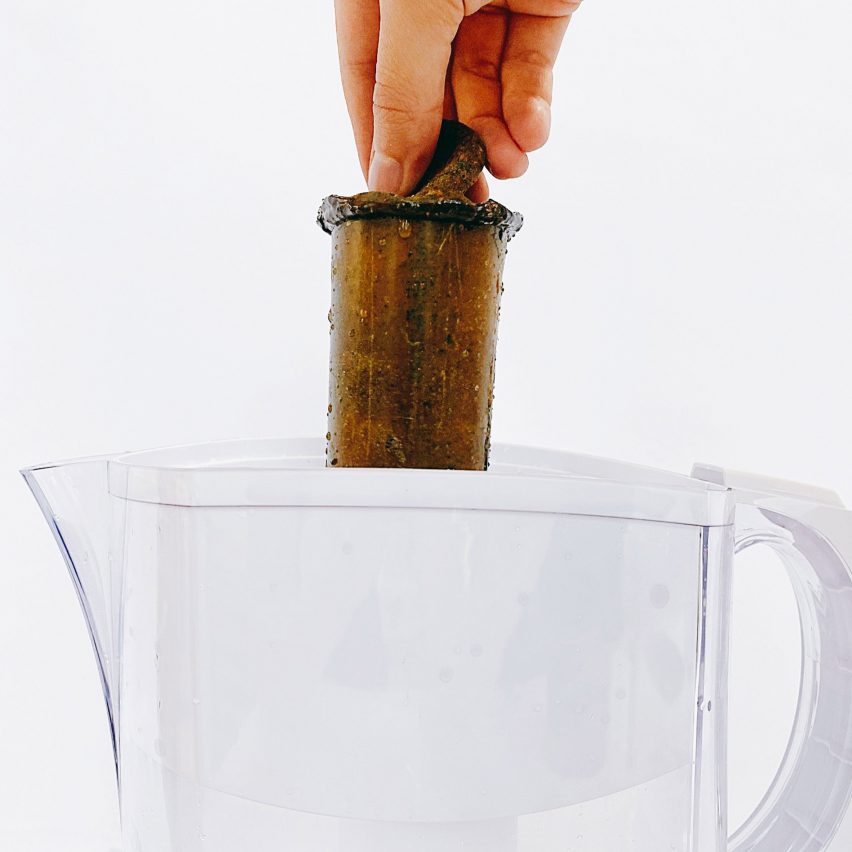
Pratt Institute graduate students Charlotte Böhning and Mary Lempres have designed a collection of carbon water filters made completely without fossil fuels, using waste from their own kitchens.
The four-piece range, called Strøm, includes a sustainable substitute for Brita filter cartridges, purifying sticks that can be added into cups or bottles and a self-cleaning pitcher and carafe.
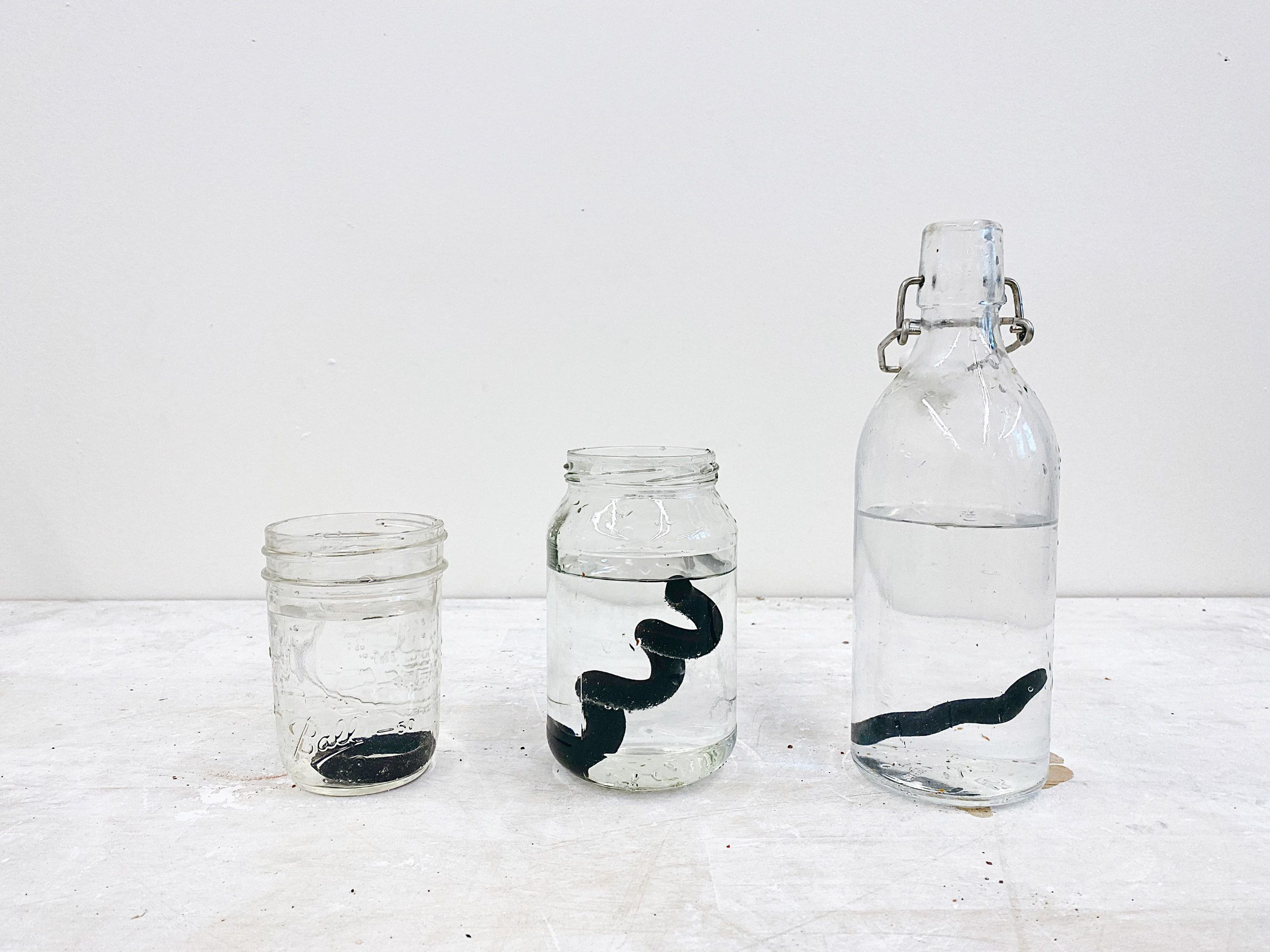
Traditional water filters consist of activated carbon housed in plastic cartridges, both of which are generally derived from non-renewable coal and petroleum.
But for their designs, the graduate students have developed a new fossil-fuel-free material, made by turning food waste into carbon-rich biochar and combining it with natural resins, so it can be shaped like a thermoplastic.
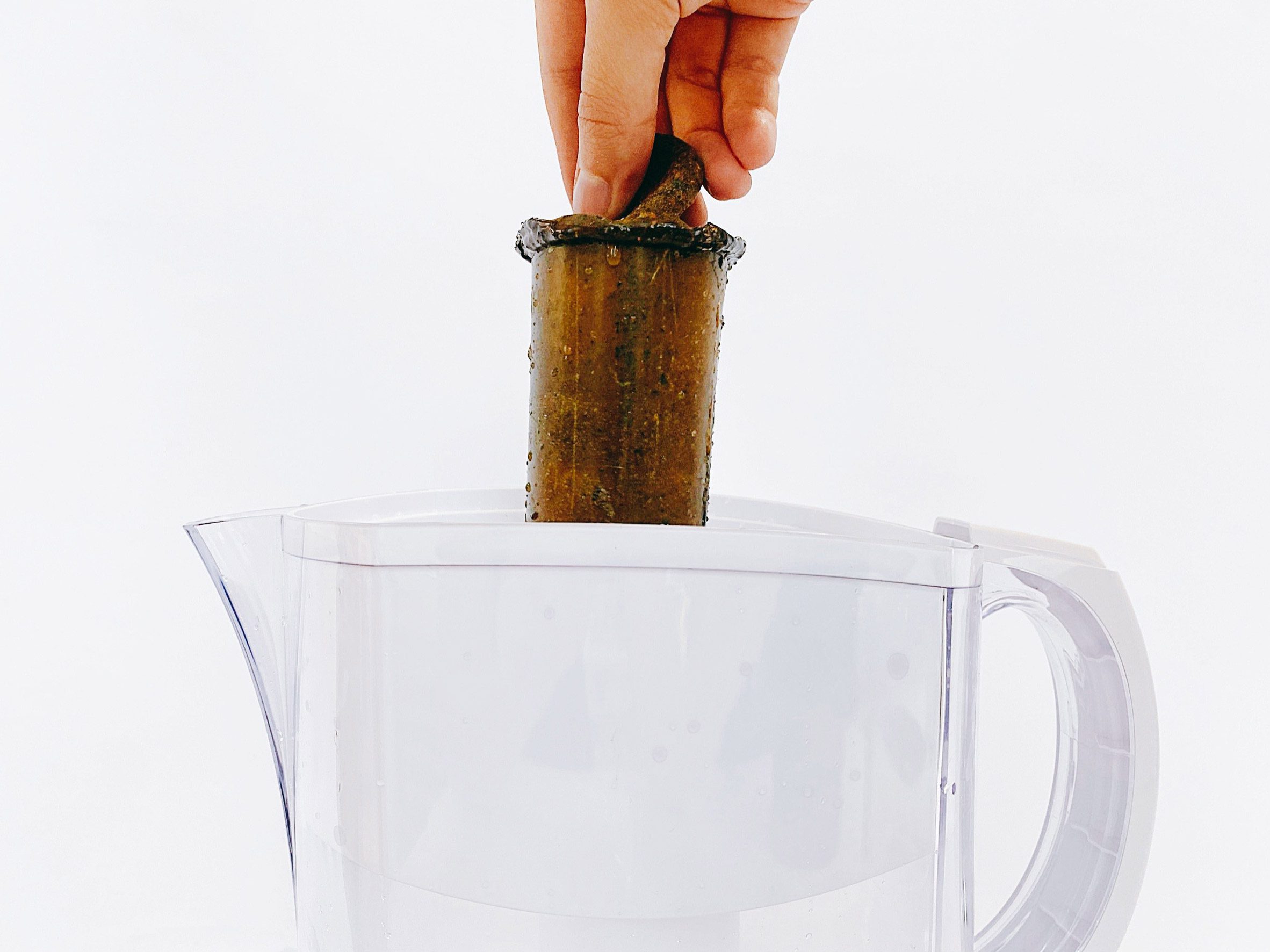
The resulting composite acts as both filter and vessel at the same time and, unlike the 100 million polypropylene cartridges that end up in landfills every year, will decompose in soil over the course of a single month.
"By utilizing an existing waste stream, we can reduce the negative lifecycle impact of water filtration," Lempres told Dezeen.
"While carbon filtration immobilises harmful contaminants, the plastic cartridge's only function is to hold the activated carbon," she continued. "Meanwhile, sourcing, manufacturing and injection-moulding the polypropylene are the largest contributors to the filter's impact."
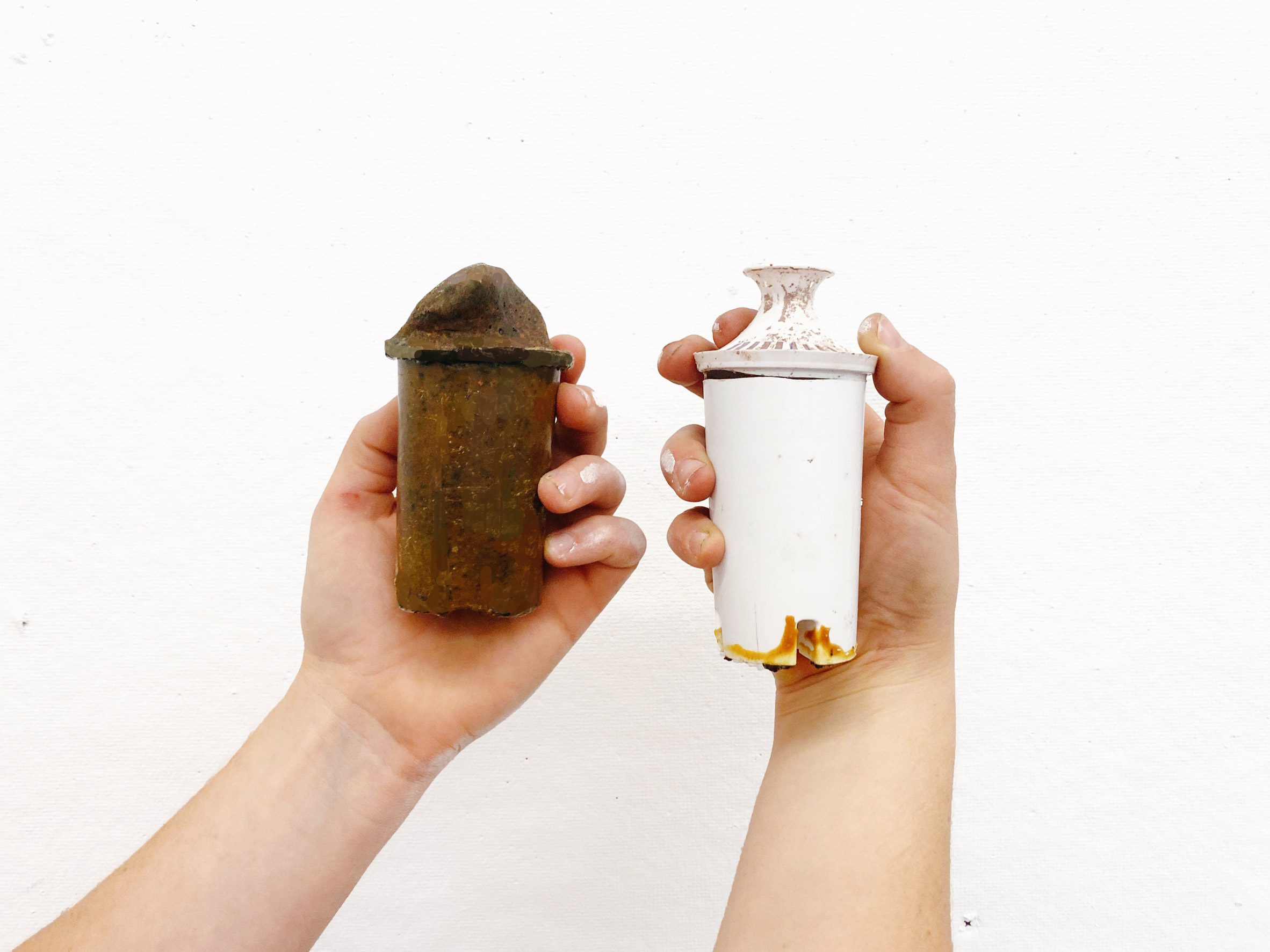
Activated carbon is used in water purification due to its high porosity, which gives it an outsized surface area equivalent to one football field for every four grams of material and gives it the capacity to absorb a variety of contaminants including bacteria, pesticides and even nanoplastics.
Böhning and Lempres' material achieves a similar effect through the use of biochar, which they make by burning banana peels, sheep bones and other food waste from their kitchens, as well as from local farms and restaurants, in a special kiln in the absence of oxygen.
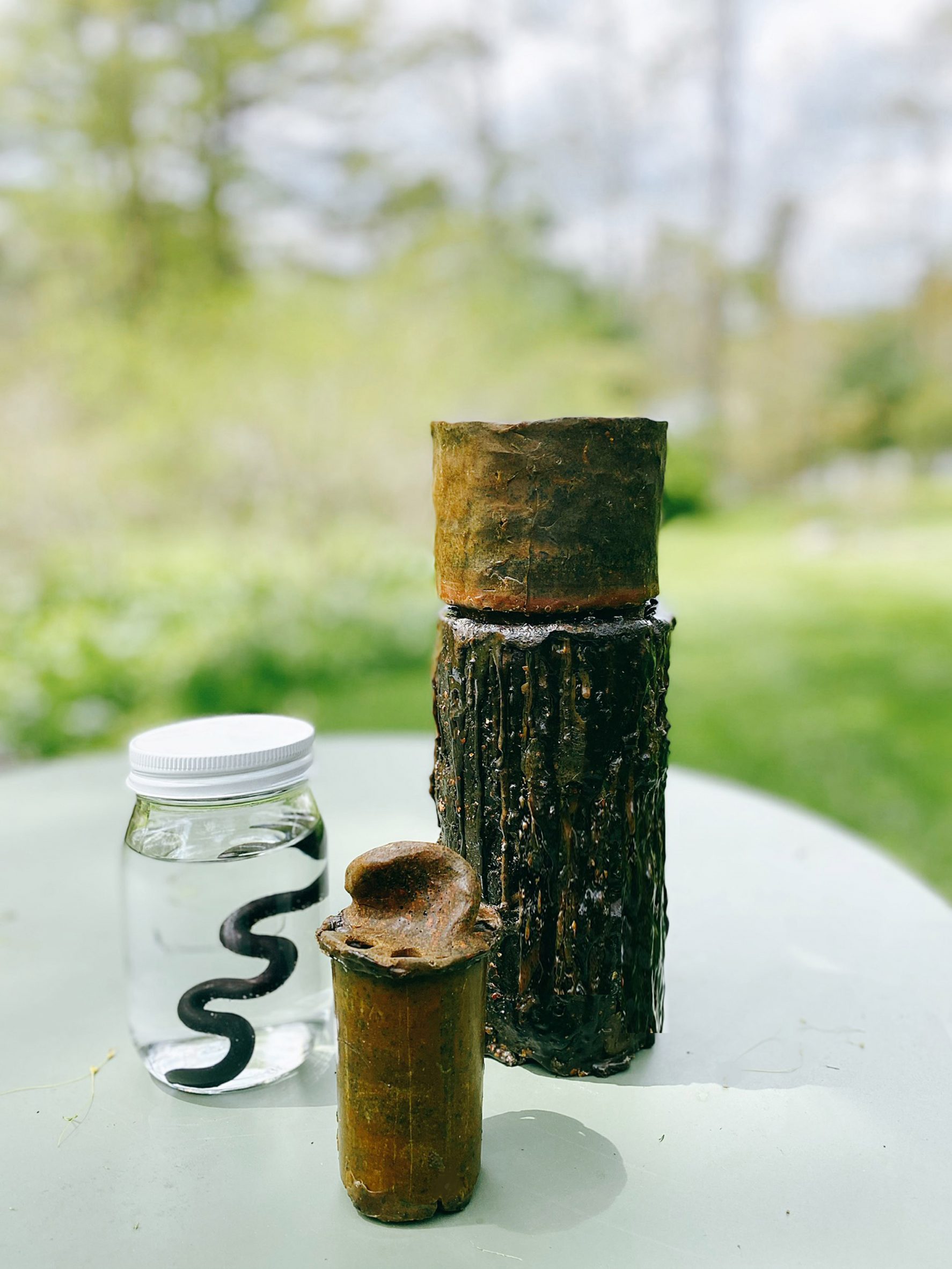
This process, called pyrolysis, does not allow the carbon in the biomass to form carbon dioxide during combustion and instead turns it into a porous, highly absorbent char while permanently storing away the carbon contained in the food, which would otherwise have been released into the atmosphere during decomposition.
"Fundamental to our interest in biochar is the ability to create circularity by turning waste into a functional, carbon-sequestering material," Böhning added.
"One of the advantages of pyrolysis is that when the biochar reaches a landfill, it will continue to store carbon stably as opposed to food waste, which due to the conditions in a landfill would produce methane."
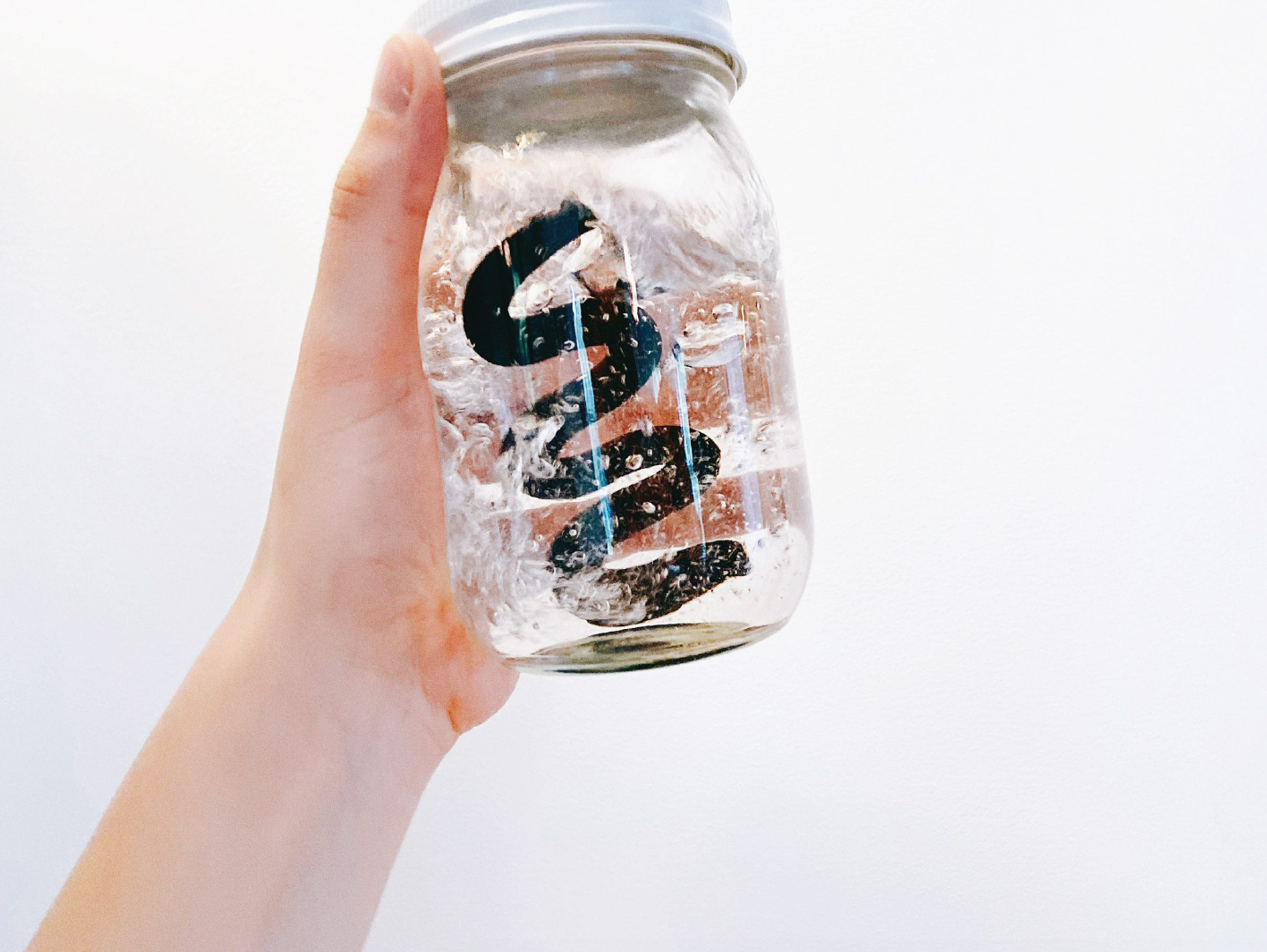
The biochar is mixed with a binder of bee propolis and tree resins to create a material that can be cast, injection or hand moulded to form disposable filtration pellets for use in the cartridge and carafe, as well as the actual Strøm vessels themselves.
Böhning and Lempres say the final products don't just match but actually outperform traditional filters and work on several substances that don't react to activated carbon.
Magnetising the biochar in a ferrous salt bath allows it to draw heavy metals out of the water, while the addition of animal bones into the char helps the material to filter out fluoride.
Meanwhile, the propolis, which consists of a mixture of tree sap as well as beeswax and saliva, acts not just as a binder but also helps to prevent bacterial growth and grime build-up.
"Bees use it to mummify the carcasses of any unlucky hive intruders like mice to stop the spread of disease," explained the students and hobbyist beekeepers.
"So it has significant antimicrobial, antiviral, anti-fungal and anti-inflammatory properties. However, it needs to be harvested ethically so as to not disturb the hive."

According to the duo, the final material is more affordable and accessible than activated charcoal, due to being made from waste materials, as well as being longer lasting.
While the Strøm cartridge and carafe are powered through filter pellets that can be replaced in order to expand the lifespan of the products, both the pitcher and the squiggly purifying sticks need to be discarded once their filtration capabilities have waned.
But as all the products are made from the biochar-propolis composite, the students say they are completely backyard compostable and will decompose in soil in around a month.
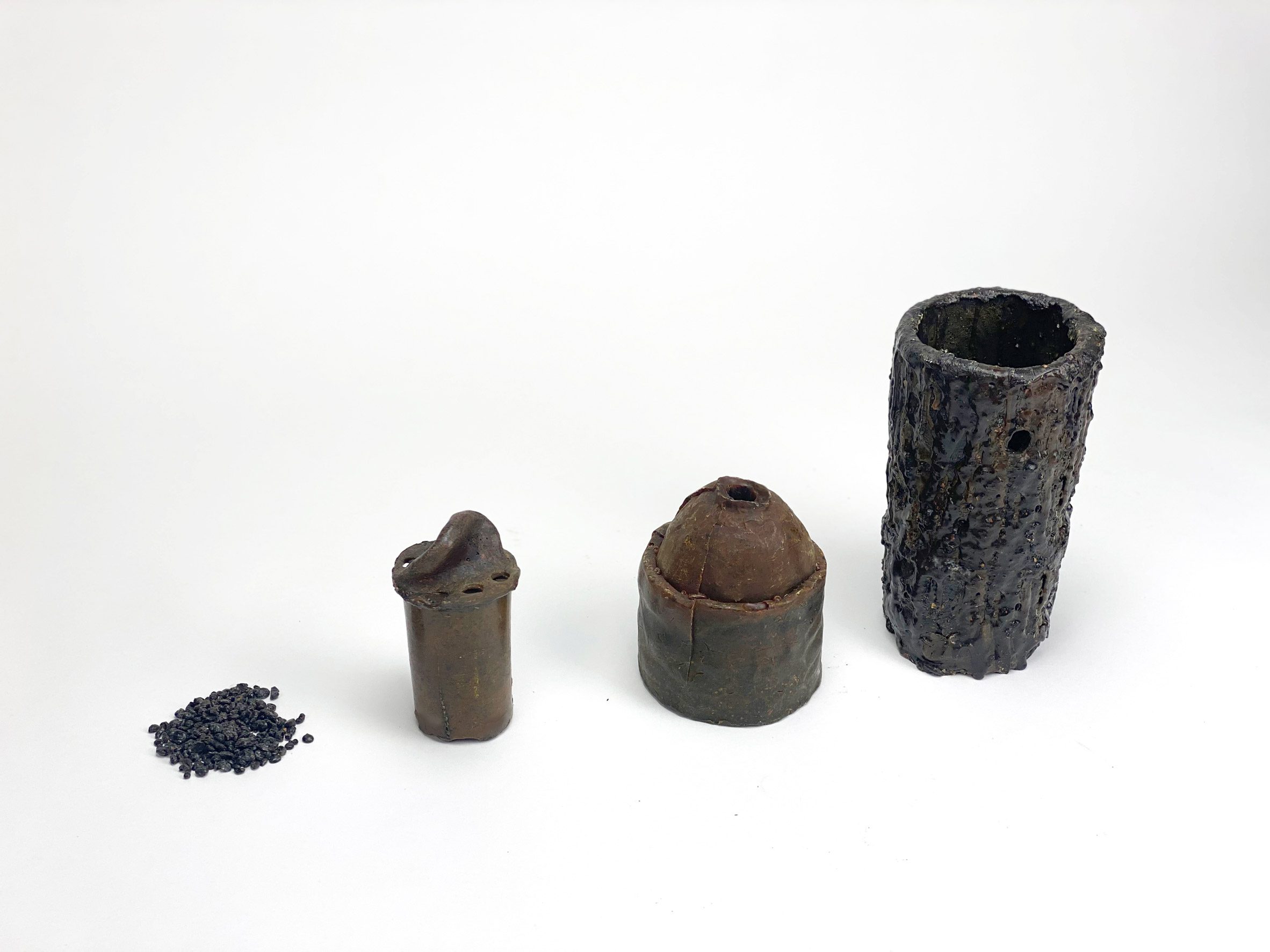
The biochar can even help to enrich the earth, as it has been used as a fertiliser for centuries and is increasingly being used to turn soils into more effective carbon sinks.
But Böhning and Lempres, who are completing their masters in industrial design at the Pratt Institute, are currently still investigating whether the toxins, metals and plastics immobilised in the filters could also have adverse effects.
Nevertheless, their Støm project was awarded the design school's second annual Material Lab Prize, which recognises student projects that give waste streams a new purpose.
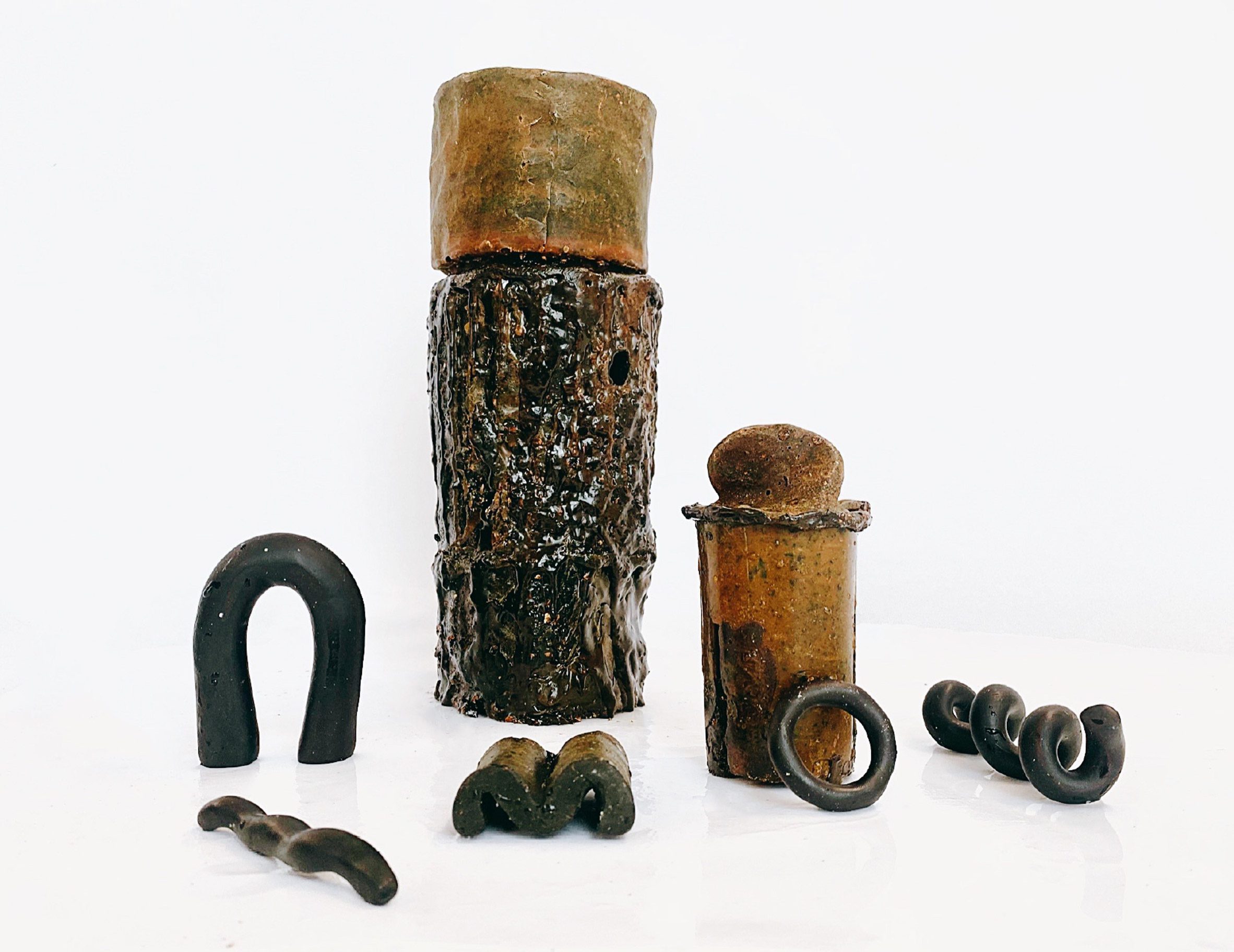
Berlin startup Made of Air has previously made use of biochar's ability to sequester carbon to create a bioplastic that stores more CO2 than it emits and can be turned into everything from furniture to facades.
Elsewhere, Snohetta has experimented with using the material to create low-carbon concrete, which it hopes to use in its restoration of the Knubben harbour bath in Arendal, Norway.
The post Pratt students create home-compostable water filters from food waste appeared first on Dezeen.

No comments:
Post a Comment